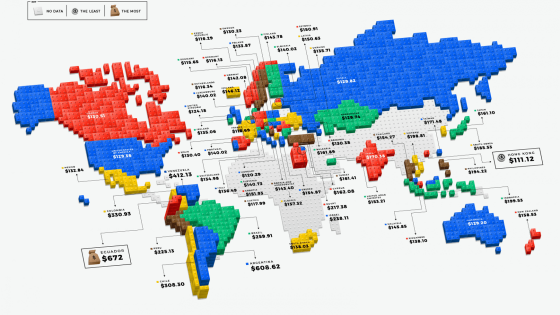Analysis of 'Chess.com' showing examples of 'regional pricing,' which sets prices by region to maximize business worldwide

Online shopping and digital content distribution allow anyone to do business with customers around the world. For example, when selling e-books on Amazon's Kindle store, simply setting a price for Japan allows prices in each country to be set according to the exchange rate, making it possible for purchases from overseas. However, simply converting prices according to the exchange rate can result in a price that is affordable in one country being too expensive in another. Software engineer Mo Beigi explains the importance of 'regional pricing' to address such cases, using real-life examples.
Chess.com Regional Pricing: A Case Study - Mo Beigi
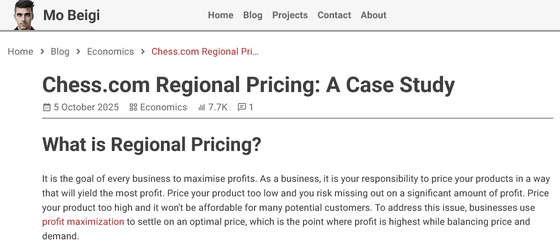
Every business aims to maximize profits, and pricing is important in generating maximum profits. If the price is too low, profits will be low even if sales are high. On the other hand, if the price is set too high in an attempt to increase profits, potential customers will be unable to purchase. Therefore, with profit maximization in mind, businesses must determine the optimal price that maximizes profits while balancing price and demand.
For global companies, maximizing profits requires adjusting prices regionally based on factors such as purchasing power, taxes, shipping costs, and tariffs. For example, a cup of coffee might cost $4 in the United States, but the same product from the same company might sell for $1.69 in India.
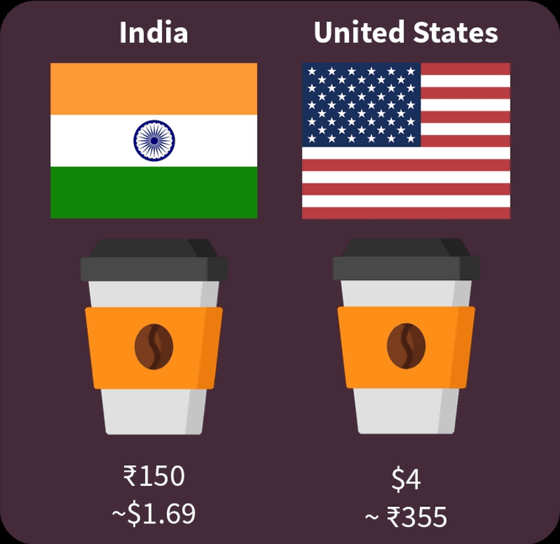
Similar regional pricing is often used for online content. Many popular online services, such as Netflix, Spotify, Disney+, and YouTube Premium, use regional pricing. For example, the monthly price of YouTube Premium in Japan is 1,280 yen, but it is cheaper in Thailand at 159 baht (approximately 691 yen) and in Indonesia at 59,000 rupiah (approximately 553 yen). On the other hand, it is relatively expensive in the Netherlands, Italy, and Belgium at 11.99 euros (approximately 1,913 yen), and in Switzerland it is 15.90 Swiss francs (approximately 2,697 yen), more than double the price in Japan. Price increases and decreases are also implemented by region.

As an example of how to set regional pricing, Beigi analyzes the regional pricing strategy adopted by Chess.com , a popular online chess platform. Chess.com offers premium plans with unlimited play and access to insights, including monthly 'Gold,' 'Platinum,' and 'Diamond' plans, as well as a more cost-effective annual plan.
The price of a Chess.com premium account varies based on your IP address, so Beigi uses a VPN to spoof his location, changing his IP address and viewing prices in other regions. In some countries, simply changing his IP address didn't reveal the local price, so he created separate accounts for those regions.
Below is a world map showing the prices of premium accounts on Chess.com. Darker shaded areas are more expensive, while lighter shaded areas are cheaper. Areas without shaded areas are areas where the service is not available or where data was unavailable. Looking at the world map, prices are particularly cheap in Africa, South Asia, and Southeast Asia, which is thought to roughly reflect local purchasing power.
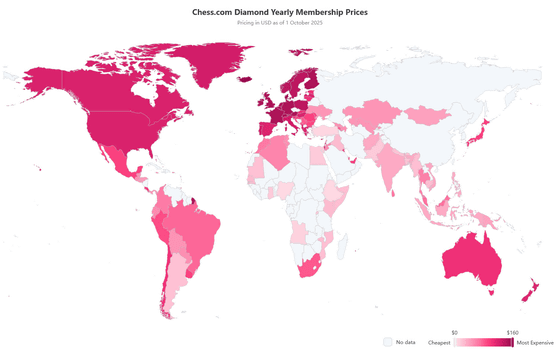
For the 'Gold Membership (Monthly),' the cheapest was Nigeria at $0.67 (approximately 102 yen), while the most expensive was Denmark at $9.42 (approximately 1,435 yen), a price difference of about 14 times. For the 'Gold Membership (Yearly),' the cheapest was Nigeria at $3.10 (approximately 472 yen), while the most expensive was Ireland at $65.19 (approximately 9,900 yen), a price difference of about 21 times.
Another interesting point is the regional differences in the 'Friends & Family Plan.' The Friends & Family Plan allows up to six family members and friends to share one premium account. Because prices vary by region, it's not possible to create an account in a cheaper country and share it in another. Of the 126 countries surveyed, only 47 allow cross-border use of the Friends & Family Plan, while 79 countries only allow it domestically. Cross-border use is only available in countries where the premium membership price is relatively high.
Beigi's website provides a table showing the price rankings for all 126 countries surveyed, and the JSON data file is availableon GitHub . As of October 1, 2025, Japan ranked 77th in terms of cheapest prices, 22% cheaper than the US. The Friends & Family plan cannot be used internationally in Japan.
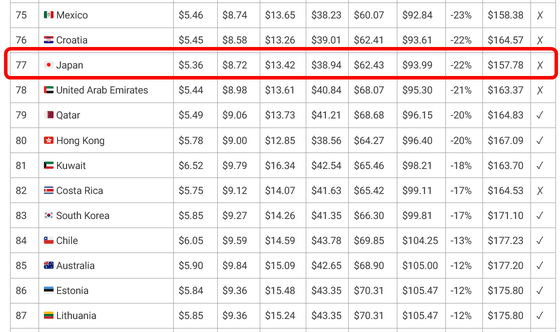
Related Posts:
in Note, Posted by log1e_dh
